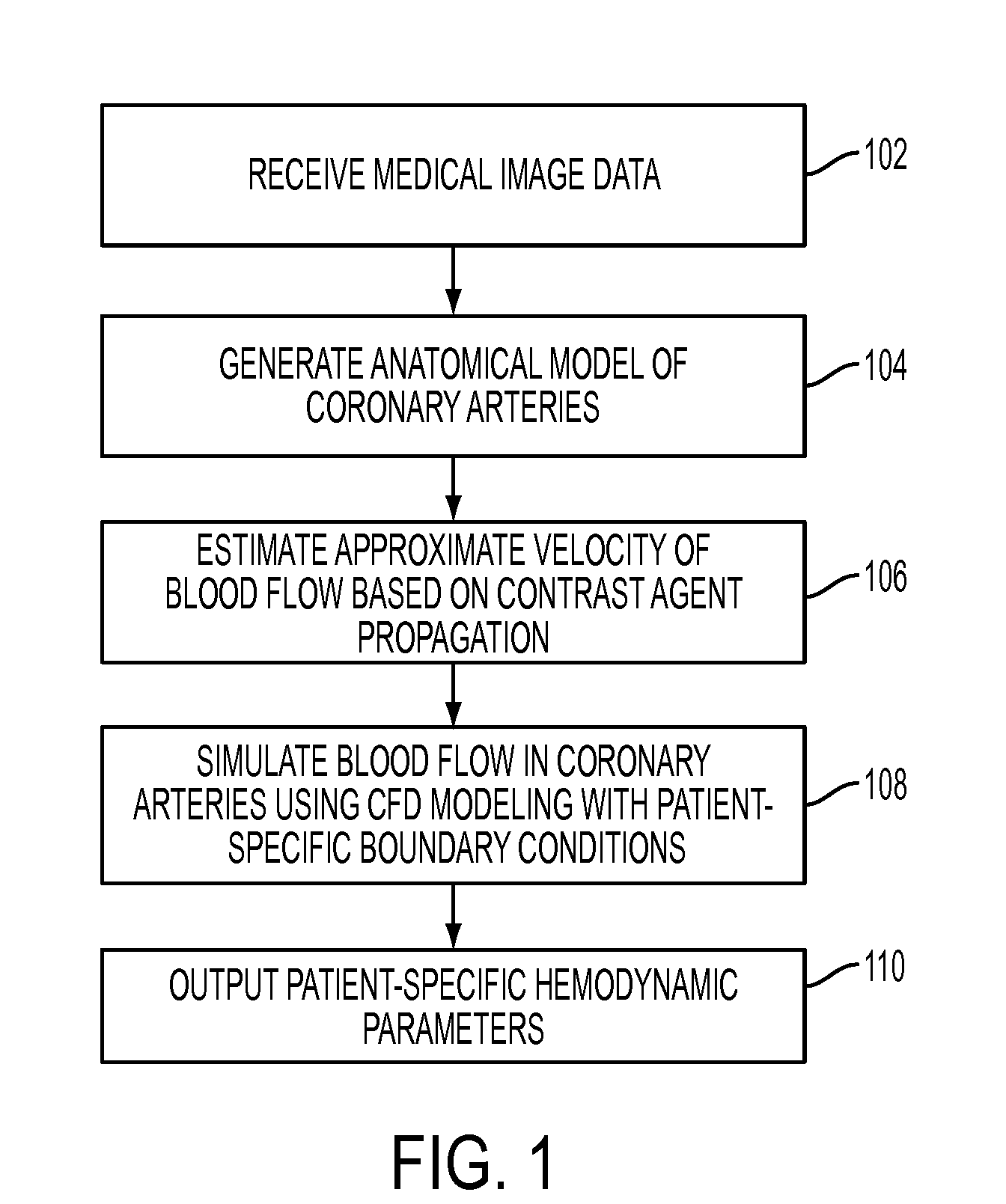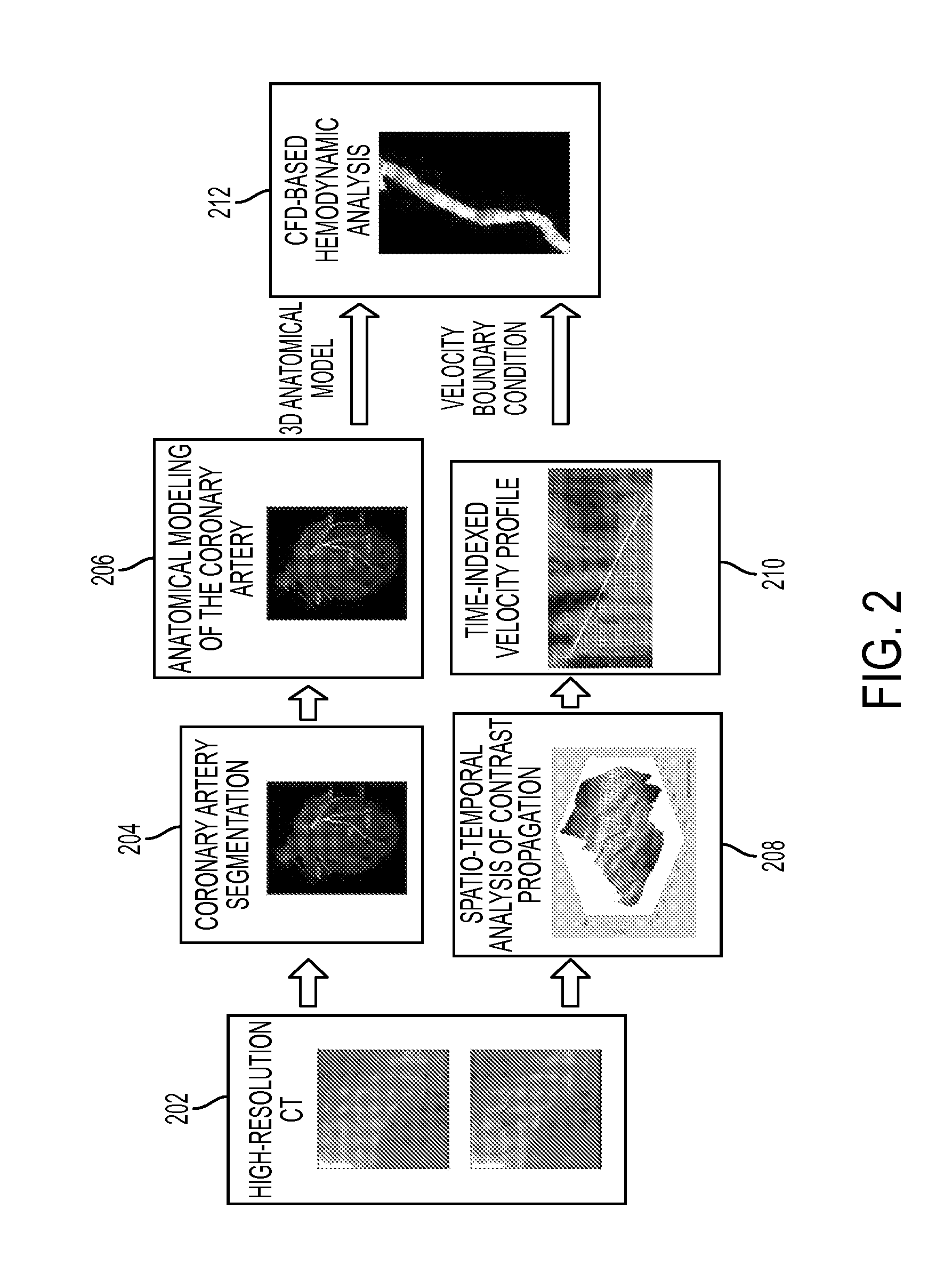Method and System for Non-Invasive Assessment of Coronary Artery Disease
a non-invasive, patient-specific technology, applied in the direction of image enhancement, instruments, analogue processes for specific applications, etc., can solve the problems of reducing the accuracy of in-viv reducing the accuracy of in-vitro and in-vitro estimates of patients, and providing anatomical assessmen
- Summary
- Abstract
- Description
- Claims
- Application Information
AI Technical Summary
Benefits of technology
Problems solved by technology
Method used
Image
Examples
Embodiment Construction
[0015]The present invention relates to non-invasive assessment of coronary artery disease using patient-specific modeling of the heart from a sequence of volumetric data, such as computed tomography (CT), magnetic resonance imaging (MRI), and echocardiography data. Such sequences of volumetric data, also referred to herein as 4D image data or 4D images, are sequences taken over a period of time to cover one or more cardiac cycles, in which each frame is a 3D image (volume). Embodiments of the present invention are described herein to give a visual understanding of the coronary artery disease assessment method. A digital image is often composed of digital representations of one or more objects (or shapes). The digital representation of an object is often described herein in terms of identifying and manipulating the objects. Such manipulations are virtual manipulations accomplished in the memory or other circuitry / hardware of a computer system. Accordingly, is to be understood that em...
PUM
 Login to View More
Login to View More Abstract
Description
Claims
Application Information
 Login to View More
Login to View More - R&D
- Intellectual Property
- Life Sciences
- Materials
- Tech Scout
- Unparalleled Data Quality
- Higher Quality Content
- 60% Fewer Hallucinations
Browse by: Latest US Patents, China's latest patents, Technical Efficacy Thesaurus, Application Domain, Technology Topic, Popular Technical Reports.
© 2025 PatSnap. All rights reserved.Legal|Privacy policy|Modern Slavery Act Transparency Statement|Sitemap|About US| Contact US: help@patsnap.com



